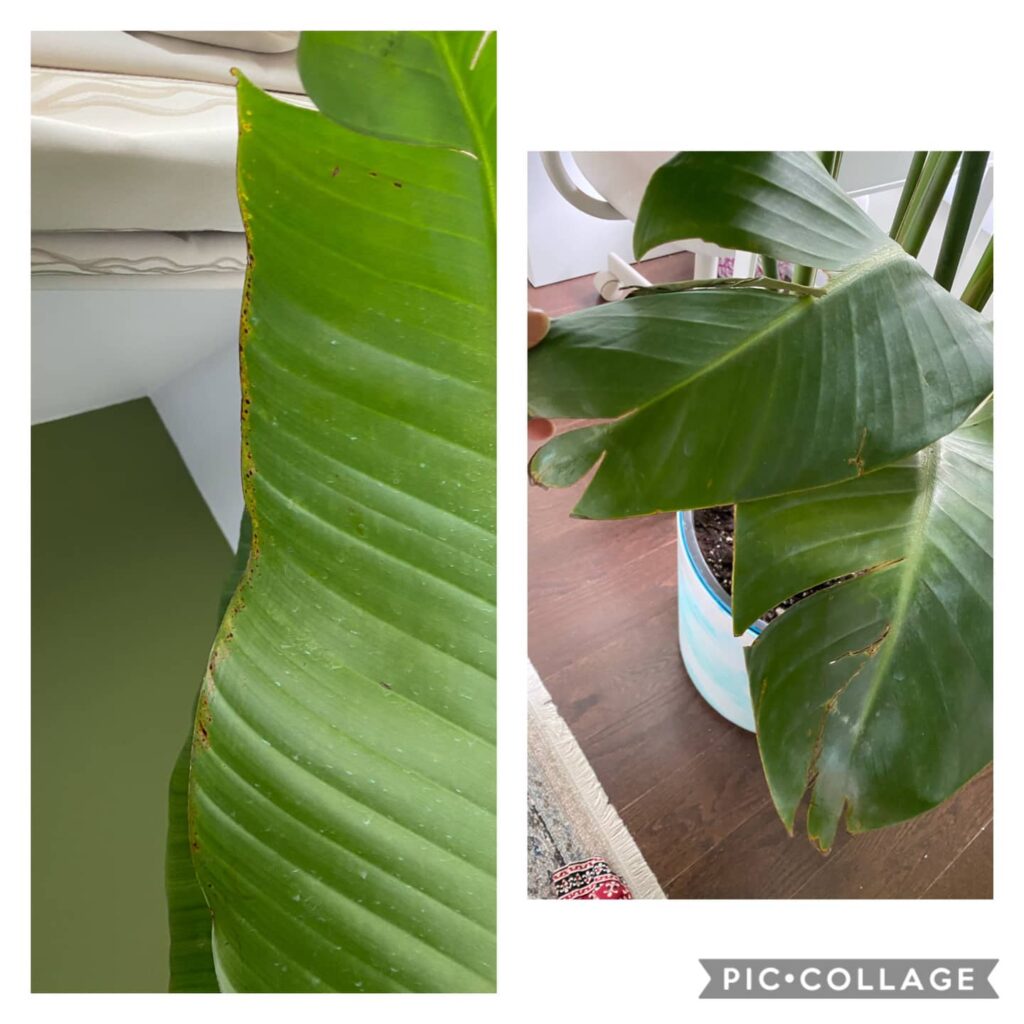
My birds of paradise sits by my east window, soil type is well drained.
I’m wondering how I can help the plant as it’s getting brown and yellow unhealthy tears. One leaf also has brown and yellow dots around it. It’s very concerning for me. Hope you can help.
As a side question, how should I prep my birds of paradise soil.
Half potting mix, the other orchid mix and perlite ?
Thank you for contacting the Toronto Master Gardeners with your concern about your Bird of Paradise ( Strelitzia).
A common problem with Bird of Paradise and almost all indoor plants is the tips of leaves drying out and becoming brown. Browning of leaves can indicate many things: too much or too little water, not enough humidity, insect infestations and possibly even lack of light. Another most common reason for brown tips could be your tap water. Tap water contains contains salts, chlorine, minerals and fluoride – all of which can build up in the soil of your plant causing the tips of the leaves to burn and turn brown. One way you can reduce this is to leave your water in an open container overnight before using, this can help relieve some of the chlorine in the tap water.
Bird of Paradise does not suffer from any serious pest or disease problems, but root rot, mealy bug, scale, bacterial wilt and leaf blight are quite common. Have you inspected your plant for any pests? Make sure to check the underside of the leaves.
Leaf spot, which can be caused by a bacteria or fungus, can also affect the leaves – and might be responsible for the black spots in your photo. This type of fungal disease tends to occur when there is too much moisture present. The spots on the leaves will be 0.1-2 cm. big. Sometimes, the spots are regularly shaped like a circle, and other times the spots have a more irregular shape. Typically, the fungal spots are a lighter gray on the inside, while the outside of the spots are much darker or even black in color. The spots can also be brown or yellowish in color. It is difficult for me to see the spots on your photo. Check the spots on your plant with the description provided.
The good news is that this disease typically does not cause any long-term damage to the plant. Proper cultural conditions and sanitization practices will help stem the spread of this disease. Remove infected leaves and any infected leaf bits that have fallen onto the soil and be sure not to get water on the leaves. Water early in the day so that the surfaces of the leaves have time to dry relatively quickly.
Another possibility for your symptoms is over watering along with improper light conditions. In proper lighting conditions ( full sun) the Bird of Paradise drinks plenty of water. If your plant is not receiving enough light, it is more susceptible to overwatering. Some indications that your plant could be overwatered are droopy leaves, excessive splitting, and browning edged leaves with a yellow line. How often do you water your plant? Birds of paradise tolerate dryness and mature plants may only need to be watered once a week – allow the top 5 cm (2 inches) of soil to dry before watering. Make sure there is plenty of space around the plant so it gets good air circulation. The plant should also be in a pot that has a drainage hole, so excess water can flow out – it does not like wet feet.
Bird of Paradise grows best in rich, well-draining soil. Using a typical potting mix for indoor houseplants available at any reputable garden center would be ideal for your plant.
I am including a link to the Toronto Master Gardener’s guide to growing houseplants, I hope this can be of some help to you.

